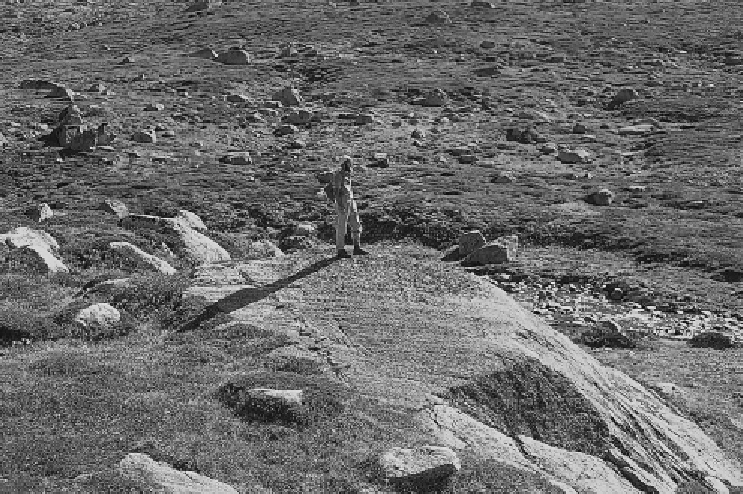Geoscience Reference
In-Depth Information
Figure 13.3. Glacially striated bedrock, SnowyMountains, Australia. (Photo: Frances
Williams.)
(
Figure 13.3
). The rock fragments in turn become facetted and sometimes striated
also. Asymmetric grooves, or chatter marks, aligned perpendicular to the direction of
ice movement with the steeper face upslope allow the direction of ice flow to be recon-
structed long after the ice has melted. On a related note, asymmetric rocks, plucked
on the downslope side and glacially abraded and smoothed on the upslope side, were
long ago recognised by French Alpine shepherds and called
roches moutonnees
for
their alleged resemblance to the side profiles of distant sheep.
As the glacier advances down the mountain valley, rock fragments derived from
avalanches and debris flows will accumulate along the margins of the glacier to
form what are called lateral moraines. Moraines are characteristically poorly sorted
and often consist of quite coarse and angular rock debris in a matrix of much finer
material. The sediment thus formed has a crude bimodal particle size distribution, and
so is often termed a
diamicton
. At the snout of the glacier, the debris carried by the ice
is deposited in roughly arcuate bands, or terminal moraines, which are deposited as
the ice melts and retreats. Dating the outermost of these terminal moraines provides
the time of maximum ice advance and, with a greater or lesser time lag, the onset of ice
retreat or deglaciation. Erratic boulders (
Figure 13.4
) may litter the landscape and, in
the case of small ice caps, can indicate the source areas from which the ice originated.
Once the entire ice mass has melted, the debris previously on and within the ice is let

